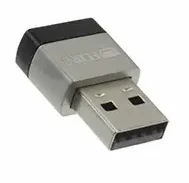

If the sensor of the device you want to control is not that close, a USB extension cable could be used to bring it into range. At the time of writing, the IR transmitter of Flirc USB has a relatively short range of only a few centimeters. Which is not just matching, but surpassing the capabilities of Apple's IR Receiver in this area.įlirc USB contains an IR transmitter that Remote Buddy 2 can use to send commands to other devices, such as TVs. When using an Apple Remote with Flirc USB and Remote Buddy 2, you can put your Mac to sleep - and then wake it up again through any, a single or multiple Apple Remote - depending on settings.

Learn more Integrated with Remote Buddy 2 at the firmware levelįlirc and IOSPIRIT have teamed up to deliver an integrated software and hardware experience - with new features that weren't possible before: POST, PUT and DELETE aren't welcome.If you have a valid license for the latest version of Remote Buddy 2, you might be able to get a steep discount when purchasing a Flirc USB. Just make all of the adjustments and customizations in the FLIRC interface. The camera in the tent is controlled from the computer, of course, and I work in near darkroom conditions apart from the light from the monitor and from the pad. I can push the pad around with the bag covering it like a tent to within a few millimetres of the desk. I didn't get this at first and used an HTPC profile instead. The whole setup is covered by a black bin-bag to minimise light from the environment on the slide, and to keep it all clean. Makes sure that the second segment( username) consists only of lowercase ASCII letters, numbers and dash. Just make sure you use the FLIRC profile with the Harmony software when you set it up.Makes sure that the first segment is one of the three controllers we have (Otherwise it would happily accept /zombies/fandango and try to execute the index action of a nonexistent ZombiesController to fail miserably).What this does, in addition to the basic setup above, is The with_options block applies its options to all the route definitions inside it, so that we don't have to repeat them every time. er_asset ":controller/:username/:id", :action => :show, :id => /\d+/ er_assets ":controller/:username", :action => :index A more elaborate setup would be: map.with_options :controller => /photos|videos|blogs/, You may want to constrain these routes a bit, so that they don't accidentally match other similar routes. The second line will route a URL with an id, like /videos/edgerunner/35467 to the show action on VideosController and put :username => "edgerunner", :id => "35467" in the params hash. This will route /photos/shpigford to the index action on PhotosController and put :username => "shpigford" in the params hash. Map.connect ":controller/:username/:id", :action => :show Just make some regular non-RESTful routes map.connect ":controller/:username", :action => :index


 0 kommentar(er)
0 kommentar(er)
